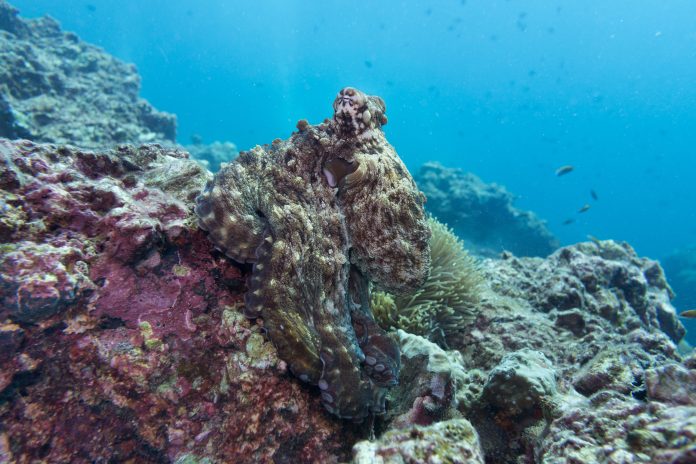Researchers have engineered bacteria to produce xanthommatin, the pigment that enables cephalopod camouflage. This biotechnological leap creates a sustainable, high-yield method for producing the coveted, colour-changing compound for cosmetics and materials science
Scientists at the University of California, San Diego (UC San Diego) have achieved a biotechnological leap by successfully engineering bacteria to produce xanthommatin, the pigment responsible for the extraordinary colour-changing abilities of octopuses and squids.
This breakthrough offers a sustainable, high-yield method for producing the nature-inspired compound, potentially revolutionising industries from materials science to cosmetics.
Decoding nature’s disguise
Cephalopods like octopuses, squids, and cuttlefish are widely regarded as the masters of disguise, capable of instantly shifting their skin colour to seamlessly blend into their environment. This is powered by xanthommatin, a natural pigment whose light-responsive properties have long captivated researchers. Until now, studying and replicating this pigment in the lab has been extremely challenging.
“This natural pigment is what gives an octopus or a squid its ability to camouflage—a fantastic superpower—and our achievement to advance production of this material is just the tip of the iceberg,” said Bradley Moore, senior author of the study and a marine chemist at Scripps Institution of Oceanography and the UC San Diego Skaggs School of Pharmacy and Pharmaceutical Sciences.
Traditional methods for obtaining xanthommatin—either by harvesting it from animals or via complex, low-yield chemical synthesis—were neither scalable nor efficient. The new approach, published in Nature Biotechnology, overcomes this supply challenge by turning bacteria into high-efficiency, natural pigment factories.
A self-sustaining production loop
The UC San Diego team, in collaboration with colleagues at the Novo Nordisk Foundation Centre for Biosustainability in Denmark, developed an innovative technique they call “growth coupled biosynthesis.” The key to this success was a novel form of bioengineering that intricately linked the pigment’s production to the survival of the bacteria.
“We needed a whole new approach to address this problem,” explained lead author Leah Bushin, who conducted the work as a postdoctoral researcher in the Moore Lab. The researchers essentially “tricked” a genetically engineered, weakened bacterial cell into producing the desired pigment. To survive, the “sick” cell had to produce both xanthommatin and a second chemical, formic acid, which acts as its necessary fuel for growth.
By making the pigment pathway essential for life, the bacteria were driven to dramatically boost production. This self-sustaining loop, combined with advanced robotics and adaptive laboratory evolution to optimise the cells, resulted in a staggering increase in yield: moving from a few milligrams per litre to between one and three grams per litre—a potentially 1,000-fold improvement.
Revolutionising sustainable chemistry
This biotechnological leap has applications far beyond marine biology. Xanthommatin is also responsible for the vibrant orange and yellow colours in some insect wings, and its properties make it a promising candidate for various industrial uses.
The sudden availability of the pigment at scale opens doors for sustainable materials and chemical production. Potential applications include photoelectronics, thermal coatings, colour-changing household paints, and environmental sensors. Furthermore, collaborators from the U.S. Department of Defense are interested in its natural camouflage capabilities, while cosmetic companies see potential in developing natural sunscreens using the compound.
“This project gives a glimpse into a future where biology enables the sustainable production of valuable compounds and materials,” said co-author Adam Feist. The new method is poised to accelerate the transition away from petroleum-based products toward a future of cleaner, nature-inspired biomanufacturing.




![Discovering the dark universe and a stellar nursery: Euclid searches through Orion constellation Image description: The focus of the image is a portion of LDN 1641, an interstellar nebula in the constellation of Orion. In this view, a deep-black background is sprinkled with a multitude of dots (stars) of different sizes and shades of bright white. Across the sea of stars, a web of fuzzy tendrils and ribbons in varying shades of orange and brown rises from the bottom of the image towards the top-right like thin coils of smoke.] CREDIT ESA/Euclid/Euclid Consortium/NASA, image processing by M. Schirmer (MPIA, Heidelberg)](https://www.openaccessgovernment.org/wp-content/uploads/2025/11/Euclid_peers_through_a_dark_cloud_s_dusty_veil-218x150.jpg)






